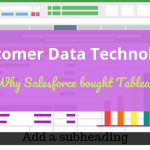For marketing analytics, there are three main ingredients. If you don’t have all three, you can’t and won’t get answers. So what are they and why are they important?
- Subject matter expertise
- Clear goal
- Data sources
Let’s first talk about subject matter expertise.
We’re marketers working mostly for technology companies. Say you want us to work for a pharmaceutical or financial services company. While we’d be quick studies, we’d have to learn about those industries before defining goals.
Sure, there are some who say what matters is the data scientist or data analyst’s ability to program. Some think it’s knowledge of statistics or machine learning algorithms that are most critical. Any skilled data scientist could work on any topic. They could…but getting right answers simply takes longer. So, a marketing analytics pro with some knowledge of your industry will lead to a fast and better result.
Besides, subject matter expertise is crucial to defining goals. And aligning and prioritizing research questions. Finally, it’s necessary for creating a hypothesis about your business or market situation.
The last thing you need for marketing analytics is data. You have to figure out what data will answer your research question to meet your goal.
Sure, you’re thinking this sounds easy. Data is everywhere.
But the kind you need depends on your goal. For example, you’re analyzing marketing campaign performance. That’s internal or first-party data. Another example? You need to find new lead sources, so you turn to third-party sources. Trying to segment a market? Primary research is probably the best data source for that.
Abundant Data Sources for Marketing Analytics
So no doubt, your marketing analytics task requires one or more of the following data sources to meet goals:
- Internal or first party data
- Third-party data
- Primary Research
- Digital data
- Manually collected data
- Modeled or simulated data
This gets tricky because it’s often hard to know the data you’ve got until you work on it. Until you get your hands dirty, it’s impossible to find out data quality and data quantities limitations.
Getting data source samples helps. But even then, you don’t really know what you’ve got until you to work with the actual data.
So the way we look at it: define your goals when you’re about 80% certain of what data source can really do. Oh, and prepared to be flexible. You’ll uncover the marketing analytics gems, and they’re rarely what you expect.
In sum, remember that successful marketing analytics needs three things. First, subject matter expertise, so you can apply results to the business. To tell them what it means what they should do differently. Second, it requires clear and aligned goals. Finally, it needs a data source. And that data source must be high quality in enough quantities to get valid results.
To learn more, read about how organizations get data and tips for the scrappy marketer.
Note: In January 2018, this presentation was presented to Virginia Tech Executive MBA Program
Duration = 5 minutes







